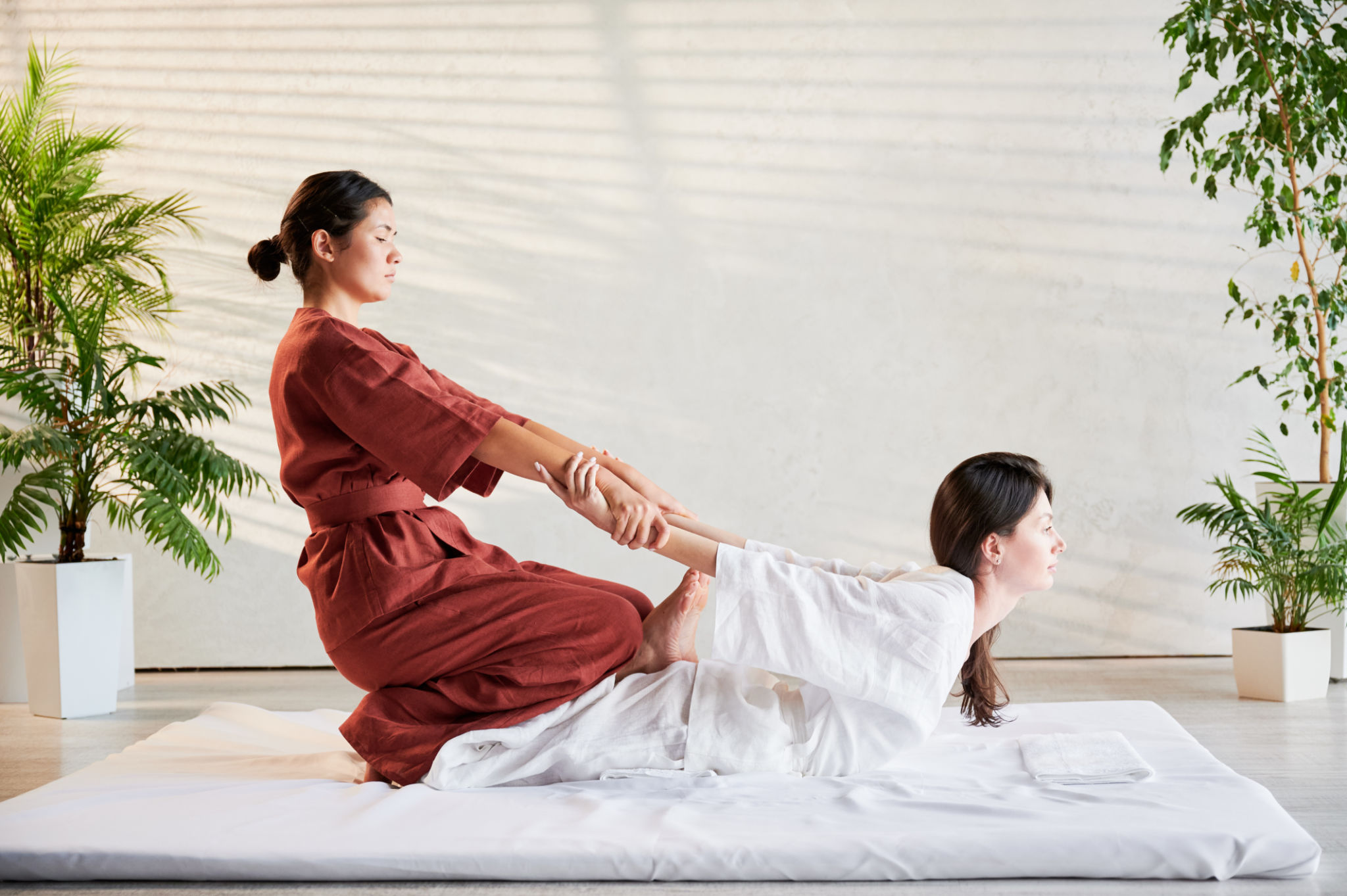How Traditional Thai Massage Differs from Other Styles
Understanding Traditional Thai Massage
Traditional Thai massage is a unique form of bodywork that stands out from other massage styles due to its comprehensive approach to physical and spiritual well-being. Unlike many Western massage techniques that focus primarily on relaxation, Thai massage combines acupressure, yoga-like stretching, and deep tissue manipulation to enhance energy flow in the body.
Originating over 2,500 years ago in Thailand, this ancient practice is deeply rooted in Buddhist philosophy. It is designed not only to relieve muscle tension but also to promote a balanced state of mind and body. This holistic approach makes Thai massage a truly unique and enriching experience.

The Technique: Dynamic and Interactive
One of the most distinctive features of Thai massage is its dynamic and interactive nature. Unlike other massages where clients passively lie on a table, Thai massage takes place on a mat on the floor, allowing for greater range of motion. The therapist uses their hands, elbows, knees, and feet to apply rhythmic pressure along energy lines called "Sen." This comprehensive technique stimulates energy points, promoting better circulation and flexibility.
This style of massage involves a series of guided stretches that resemble yoga postures, often referred to as "assisted yoga." The practitioner gently stretches the client's body to increase flexibility and range of motion. This aspect sets Thai massage apart, providing both physical benefits and a meditative experience.

Holistic Benefits Beyond Relaxation
While relaxation is a benefit of most massages, traditional Thai massage offers a deeper range of holistic benefits. It is known for boosting energy levels, improving posture, and enhancing overall body alignment. By targeting energy pathways within the body, it can also help alleviate stress-related conditions and improve emotional well-being.
Thai massage can also be beneficial for individuals with specific health issues such as chronic pain or mobility restrictions. The combination of pressure and stretching helps to release muscle tension and improve joint mobility, providing relief and promoting healing.

Comparing Thai Massage to Other Styles
When comparing traditional Thai massage to other styles such as Swedish or deep tissue massage, several differences stand out. Swedish massage is primarily focused on relaxation and typically involves long, flowing strokes using oil. In contrast, Thai massage does not use oil and emphasizes pressure points and stretching without the need for undressing.
Deep tissue massage targets deeper layers of muscle tissue to relieve chronic tension, using slow strokes and deep pressure. While it shares some similarities with Thai massage in terms of pressure application, it lacks the dynamic stretching component that characterizes Thai massage.
Who Can Benefit from Thai Massage?
Thai massage is suitable for individuals looking for an invigorating and holistic approach to wellness. It is particularly beneficial for those who enjoy yoga or are seeking to improve their flexibility, as well as anyone interested in exploring a comprehensive method of stress relief.
Before booking a session, it's important to consult with a qualified practitioner to ensure that it's appropriate for your specific health needs. Overall, traditional Thai massage offers a unique blend of physical rejuvenation and mental clarity that can benefit a wide range of individuals.